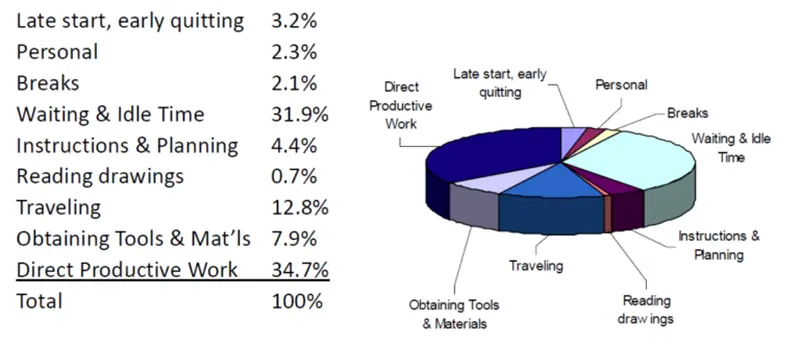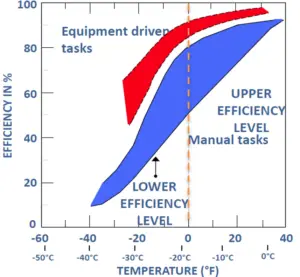
Project costs are derived from the required resources needed to complete the objective, which might be anything from constructing a new facility to replacing parts to comply with new safety requirements. The resources involved can be classified as time, money, labor, and materials.
For a cost engineer, often labour proves to be the most difficult resource to properly estimate. This is not because the required hours for activities are not well known, but because adjusting standard labor norms to the project-specific conditions requires effective project controls. Project controls software can streamline this process by providing the tools necessary to track, adjust, and manage these factors effectively.
What is productivity?
To quantify differences between project conditions and the standard or planned value, we measure the productivity of the work performed. Doing so allows you not only to estimate the required resources but also to continuously compare the project’s performance against the original plan for control and decision making.
A typical activity can be broken down into sub-tasks to better study productivity. The chart below shows the contributions of these sub-tasks to the total required effort:

This chart shows us that a worker spends a lot of time waiting and traveling, next to the actual direct work that needs to be carried out. These elements are heavily influenced by local conditions in the field as well: if the job at hand is far away from the tool shed or warehouse, the overall activity has a longer duration and consequently lower productivity is achieved. Productivity can easily be increased by handing out bikes or arranging shuttle busses. It might be worth the initial extra investment.
Determining productivity factors
The actually achieved productivity can be related to the planned or previous productivity by a factor. If the productivity decreases from 100% to 50%, the required effort required 2x the amount of hours, so the productivity factor is 2. This factor can be set up on a very detailed level, for the different types of activities, or on a larger scale per area. This depends on the resolution with which you want to adjust the required hours.
The productivity factor for a given activity changes with the project conditions. Finding out how it behaves gives you the power to predict the productivity of future projects. As an example, consider how productivity drops with decreasing temperatures, for different types of activities:

The blue area represents the range in which manual tasks vary; the red area shows the same for the more automated tasks.
The role of productivity in project controls
Information about productivity from the field is valuable input for controlling projects. Comparing against the expected productivity gives an indication of the performance of your contractors. This allows you to steer the project and get it back on track, or to handle disputes when they arise because of delays. Knowing about factors that influence productivity is an important aspect of cost management and project control that provides you the knowledge to be really in control of your projects. For tools that help streamline and enhance these processes, consider exploring Cleopatra’s project controls software.
Scope creep, budget constraints, and aligning actual work with planned tasks are just a few of the challenges…
“Every downside has its upside” is one of the most proclaimed quotes of Johan Cruijff, one of the…
Related resources
The Importance of Location Factors in Cost Estimation
Before starting to map the location factors, always look for the relevant historical data. Knowledge is the key to creating successful cost estimates
Before starting to map the location factors, always look for the relevant historical data. Knowledge is the key…
Read blog articleReactive VS Proactive Project Cost Management
As a Project Controls Expert at Cleopatra Enterprise, Stephanie Ritchie sees a lot of common mistakes in the field, one of them being reactive instead of proactive.
As a Project Controls Expert at Cleopatra Enterprise, Stephanie Ritchie sees a lot of common mistakes in the…
Read blog article
